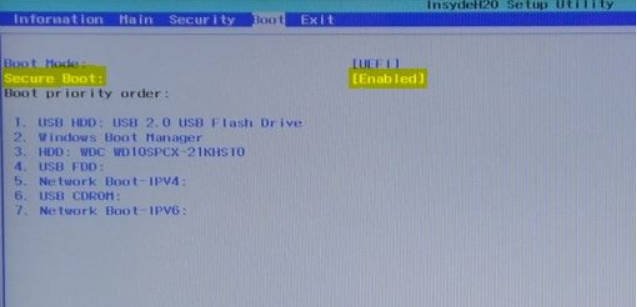
- USB SECURE BOOT VIOLATION HOW TO
- USB SECURE BOOT VIOLATION DRIVERS
- USB SECURE BOOT VIOLATION UPDATE
- USB SECURE BOOT VIOLATION DRIVER
- USB SECURE BOOT VIOLATION WINDOWS 10
bcdedit.exe -set loadoptions DISABLE_INTEGRITY_CHECKS.
USB SECURE BOOT VIOLATION DRIVER
USB SECURE BOOT VIOLATION WINDOWS 10
USB SECURE BOOT VIOLATION DRIVERS
If the issue still persists at this point, it could be that there are unsigned device drivers that are conflicting with the system protection module. Step 5: Disable Driver Signature Enforcement


It doesn’t matter that your PC is running on Windows operating system. If there is an option that says “OS type” in the menu from No.2 above, navigate to it and select “Other OS”. There’s another way to disable Secure Boot. Use the down arrow key (↓) to select the option and then press Enter. You’ll find the Secure Boot menu under one of them (depending on your BIOS/UEFI setup utility). From the main tab, use the right arrow key (→) to navigate to the Security tab, Authentication tab, or Boot tab.This is often sufficient in resolving the “Invalid signature Detected” error. Set all keys under Key Management to Not Installed.In any other case, you’ll have to perform the following fixes: To make things easier, simply turn off the computer, unplug the external drive, and reboot the system. See that Hard Drive comes first in the Boot order. Make sure the system is loading from the internal hard disk or Windows Boot Manager and not from Removable Devices. If you encountered the “Secure Boot Violation” error when an external drive (whether a hard drive or USB flash drive) was connected to your PC prior to start up, access the BIOS/UEFI settings and configure boot priority (boot order). Step 1: Set Boot Priority or Disconnect External Drive Another way is to click OK on the error message. But it usually involves restarting your computer and pressing any of the following keys repeatedly: F1, F2, Fn + F2, or Del. The method of accessing the BIOS/UEFI screen will vary based on the brand of your PC. The latter is present in more modern computers) and make some adjustments. To fix the issue, you’ll need to head to BIOS or UEFI (depending on the one your laptop uses.
USB SECURE BOOT VIOLATION HOW TO
How to Get Rid Of the “Secure Boot Violation – Invalid Signature” Error on Windows 10 Whatever the cause may be, let’s go ahead and see how to fix “Secure boot violation – invalid signature detected” on Windows 10.

You fixed in a new hard disk drive (HDD) or solid state drive (SSD).After upgrading to a new version of Windows.After flushing or resetting UEFI/BIOS to factory settings.After the installation of a secondary operating system on your PC (dual boot configuration).The error can occur in any of the following scenarios: When the PC is turned on, and the OS that’s detected is not compatible with the feature, a boot is prevented and the Secure Boot Violation error message is displayed.Īlthough the problem was later patched by Microsoft, it somehow still exists in later versions of Windows, including Windows 10.
USB SECURE BOOT VIOLATION UPDATE
It is therefore not fully enabled on machines running on the OS.īut once the update is installed, Secure Boot gets fully activated. This happened because the Secure Boot Technology present in ASUS motherboards is not compatible with some versions of Windows. The purpose was achieved but coincidentally, the update also resulted in the “Invalid signature detected” error on ASUS PCs. KB3133977 was meant to fix a problem that prevented drive encryption by BitLocker. The issue began on Windows 7, after the KB3133977 update was released.


 0 kommentar(er)
0 kommentar(er)
